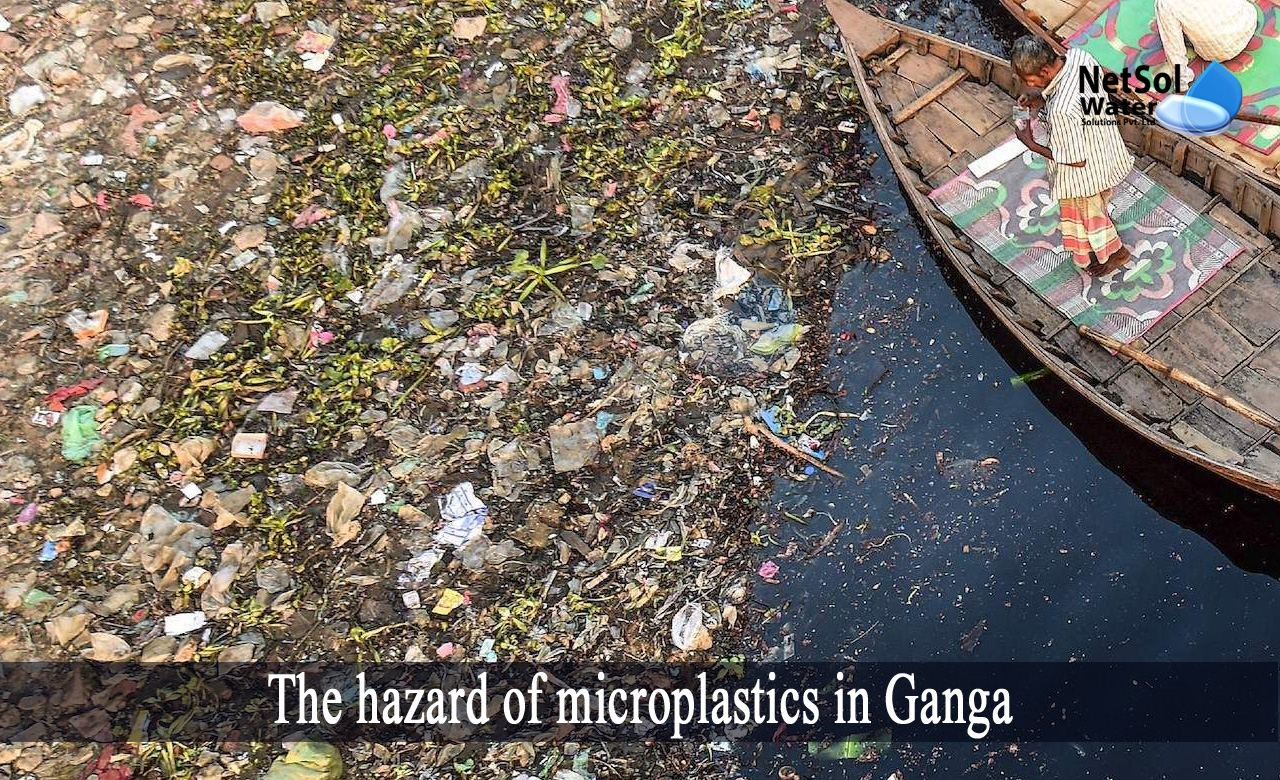Introduction
Microplastics have been identified as a major contributor of marine contamination. Plastic products and waste materials deposited in the Ganga River degrade, and are eventually broken down into micro particles, which the river eventually delivers downstream into the ocean in vast quantities.
Untreated sewage from several cities along the Ganga River's course, industrial waste, and etc., all contribute to pollution in the river as it runs through densely populated areas.
What are microplastics?
Microplastics (MPs) are microscopic bits of plastic less than 5 mm in size that find their way, into the aquatic and general environment. Microplastics are of two types:
· Primary
· Secondary
What are the hazards of microplastics in Ganga?
Because, microplastics are not biodegradable, they continue to collect in the environment, damaging marine and freshwater ecosystems, and posing a serious threat to a variety of reptile, Piscean, and avian species.
Microplastics floating on the water's surface are frequently consumed by fish, crabs, and birds which mistake them for food. This can cause neurological and reproductive toxicity, which can be fatal. Microplastics ingested by smaller animals can cause them to move up the food chain, from microscopic zooplankton to the larger carnivores.
The hazard of microplastics in the Ganga
1: A single microbead-containing personal care product can result in the release of 5000-95,000 microbeads. As a result, billions of microbeads are dispersed into river Ganga.
Because, microbeads are so small, they frequently escape detection by standard water filtering systems. They absorb hazardous compounds such as fuel, engine oil, pesticides, and industrial waste, once they enter the water system. Phytoplanktons and fish consume them and frequently die. Otherwise, they may suffer from intestinal blockage and injury.
2: Microfibers are commonly introduced into Ganga, during residential and industrial cleaning. Tones of fibers can be released when huge plastic goods, such as fishing nets, are fragmented.
Once in the river, fibers absorb hazardous chemicals, heavy metals, and oils, and can become fatal since they can easily bind with hydrocarbons, biphenyls, and ethers. These may even produce carcinogenic poisons in aquatic habitats. They enter the food chain when consumed by plankton, fish, and aquatic organisms.
When fish, oysters, and prawns are subjected to microbeads and microfibres, they can cause respiratory difficulties as well as liver and kidney damage, when consumed by people.
Netsol Water is Greater Noida-based leading water & wastewater treatment plant manufacturer. We are industry's most demanding company based on client review and work quality. We are known as best commercial RO plant manufacturers, industrial RO plant manufacturer, sewage treatment plant manufacturer, Water Softener Plant Manufacturers and effluent treatment plant manufacturers.
Plastics may be consumed by aquatic organisms via one of three routes:
· Primary consumption
Primary ingestion happens when an animal eats plastic litter on purpose, and is the well-studied type of plastic litter ingestion. This could be due to visual mistaking the item, for something tasty.
Plastic litter ingestion may also be attributed to curiosity, particularly in young or juvenile animals, which are more inclined than adults to eat litter across many species, or to hunger.
· Secondary consumption
Secondly, species that prey on those known to consume plastic litter are more likely to ingest litter.
· Ingestion by accident
This happens when an animal consumes plastic litter from the environment, while looking for natural food. Animals that forage by suction or swallowing water/sediment and filtering food, are more likely to absorb litter accidentally/inadvertently than those, which concentrate their energy on selectively targeting prey and foraging visually. Incidental ingestion can also occur in low-visibility environments, such as turbid water.
Conclusion
The presence of such a diverse range of plastic resins suggests that microplastics in Ganga, may emerge not just from industrial waste, but also from anthropogenic activities, such as bathing and washing.
This is clear when the composition of microplastics in the Ganga River is examined.As a result, one might conclude that microplastics endanger humans, the environment, and marine life, with many avian species facing varying risks based on their exposure to waste and foraging patterns.
How can we help?
Netsol Water present an efficient approach for capturing and recycling microplastics, thereby, limiting their usage and recycling them. These are the most effective ways we can control this pervasive and still little understood, kind of pollution.
Apart from this 24x7 customer support is our USP. Call on +91-9650608473, or write us at enquiry@netsolwater.com for any support, inquiry or product-purchase related query.



